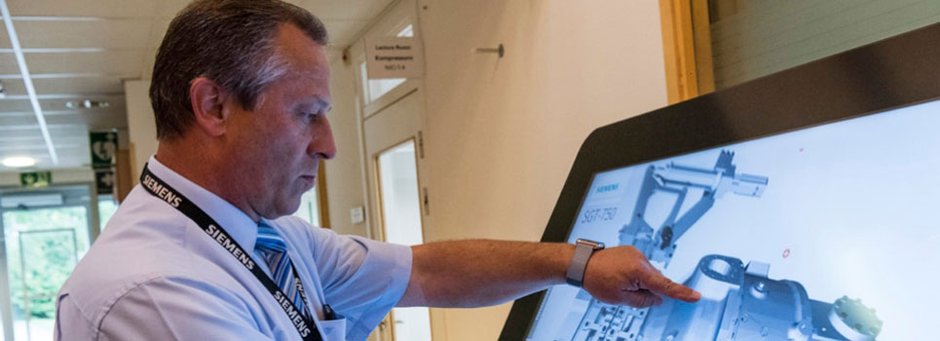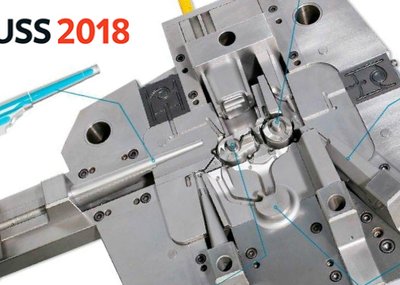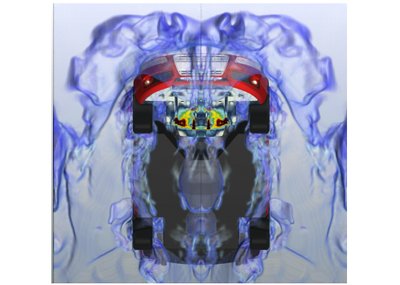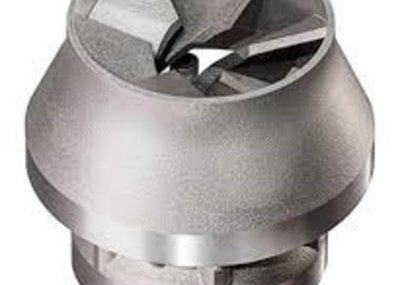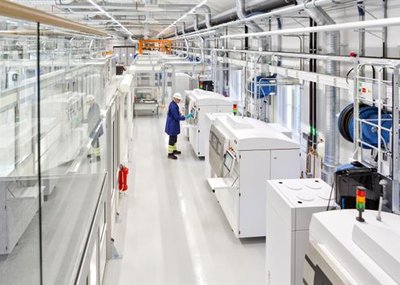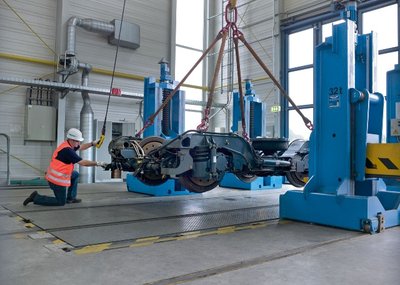In recent years, a small team in Finspång, Sweden has revolutionized the development, manufacturing, and repair of gas turbine components. Complex metal parts can now be 3-D-printed, offering unimagined design possibilities in a faster and more flexible manner than conventional manufacturing.
There’s a lot of talk of dreaming in Finspång. A small town nestled idyllically among the hills, with seemingly endless forests and extensive lakes. It’s hard to imagine a more Swedish landscape. But it’s not the environment that gets Siemens’ additive manufacturing (AM) experts dreaming. It’s the possibilities created by their new workshop, which is one of the most advanced of its kind in the world and already manufactures parts in series on a commercial basis. The works in Finspång, acquired by Siemens in 2003, produce industrial gas turbines with outputs of up to 54 megawatts. In the future, components for these will increasingly be printed in 3-D at the new workshop. It’s uncharacteristically quiet for an industrial facility; all you hear is a whirring sound and the ventilation.
White cabinets are scattered throughout the large, almost clinically spotless production hall. At first sight they look unspectacular – until you look through the window at the front of the cabinet. There, you see the incessant flashing of lasers as they melt metal powder and build eight gas turbine burners simultaneously in thousands of layers. This is AM in its most advanced form, using a 3-D printer with four lasers developed for Siemens in collaboration with manufacturer EOS. It can only be found in Finspång, and is currently still in a pre-commercial state. Since the workshop took delivery of the first 3-D laser back in 2009, things have developed at an incredible pace. Siemens has invested €20 million in this facility, and now automated production is the next aim.
Only advantages
“The nice thing about this technology is that it has nothing but advantages over conventional manufacturing,” explains Vladimir Navrotsky, Chief Technology Officer for the Distributed Generation Service Business Unit at Siemens. “We’re able to manufacture more flexibly, and in a more environmentally friendly way. Our customers also get upgrades faster.” Navrotsky, who was born in Russia and has spent the last 20 years working in Switzerland and Sweden, says that a significant reduction in lead-time makes both Siemens and its customers more competitive. Highly complex components can be manufactured at the push of a button: “With AM, the amount of manufacturing work involved is the same whether you need one hole or one hundred,” says Navrotsky.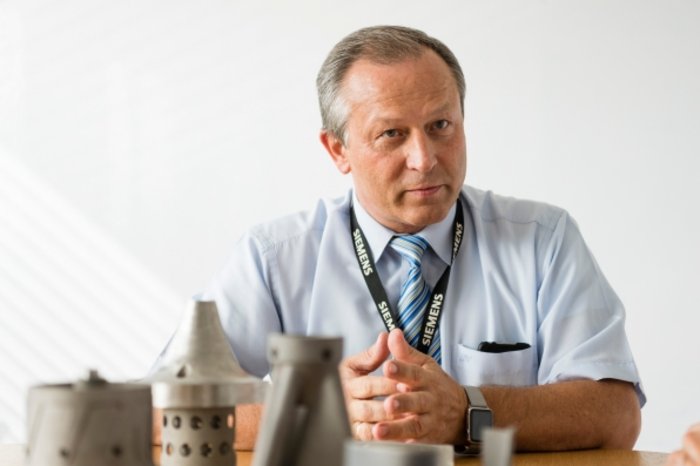
The nice thing about this technology is that it has nothing but advantages over conventional manufacturing.
Vladimir Navrotsky, CTO, Siemens Distributed Generation Service Business Unit
The workshop at Finspång, inaugurated in February 2016, already has the capacity to take care of burner repairs for a global fleet of gas turbines. An example of how the process differs from the conventional manufacturing process is the fact that now only a small part of the burner head, around two centimeters, is machined off and reconstructed with the 3-D printer. According to Navrotsky, the process is now ten times faster. “Nothing has to be produced in the traditional way with wasteful subtractive manufacturing; we use no more than precisely the amount of material required.” In only a few weeks Siemens can now manage a job that used to take almost a year to complete. Since these 3-D printing processes use up to 80 percent less energy and thus produce fewer emissions, they’re more environmentally friendly.
Besides burner heads, other components also in commercial production include a newly developed swirler. Customers whose assets are being maintained or repaired will receive components in the latest design.
Other components, such as improved turbine blades and impellers, are being tested for market launch. Finspång is the ideal location for Vladimir Navrotsky’s 20-strong team: “Here, we have the entire value chain on one site: The design team, the production facility, and service.” They’re also working hard on a new burner design. The benefits of AM technology are reflected in “skyrocketing progress in R&D,” explains Navrotsky. A burner that used to be put together using 13 parts is now produced in a single piece by the 3-D printer, and weighs 25 percent less. Thanks to AM, fuel and air pipes, which were placed outside the burner in conventional models, can be routed internally, greatly reducing the risk of damage and leaks.
Design freedom
Moreover, a completely new burner front for the SGT-800 turbine is due to enter serial production within the next year. It can have a lattice structure that can only be produced with AM, which saves fuel, enhances efficiency, and boasts a strong cooling effect thanks to the flow of air produced. “This reduces the temperature by up to two hundred degrees Celcius,” explains Navrotsky, adding that this eliminates a source of damage: even a mere 10-degree reduction increases the life span of the turbine blades. Thirty years ago, Navrotsky did research on blade cooling for his PhD. Back then, the lattice structure existed as an idea, but the technology wasn’t there yet. “Now, thanks to AM, we can control the cooling effect by controlling the type of structure, as well as its rigidity and weight. This gives us more or less limitless design freedom.” It’s one of those dreams that have come true.
But it’s only the beginning. Tests have enabled the Finspång team to develop the optimal lattice structure for creating a mixture of natural gas and hydrogen in the burner. For some Siemens customers, hydrogen is a cheap alternative to natural gas because it’s produced as a byproduct of chemical processes, explains Navrotsky, “which prompted us to modify the SGT-800 burner.” Now it’s possible to use up to 60 percent hydrogen, resulting in annual savings of more than €3 million compared with running the turbine on natural gas. There are specific design solutions for other fuels as well.
Thanks to AM, we can respond to customer requirements even more effectively.
Thorbjörn Fors, CEO of Siemens Distributed Generation Service Business Unit
“Thanks to AM, we can respond to customer requirements even more effectively,” says Thorbjörn Fors, CEO of the global Distributed Generation Service Business Unit. He emphasizes the enormous possibilities in terms of design and flexibility. AM, he explains, makes it possible to experiment, because to produce an improved component, you only have to tweak the computer model and make a new 3-D print. “But of course we also have to meet the same quality criteria as a conventional manufacturing process,” adds Fors. “Our industry is conservative. It requires thoroughness and precision, plus thousands of hours of testing, to prove that with AM, we have a pioneering role as far as the heart of the gas turbine is concerned.” It’s a position Siemens has maintained for years, he adds.
A new era is dawning
The company has far-reaching plans to make AM production even more flexible by decentralizing it. In the future, there will be 3-D printers at Siemens service centers worldwide for printing replacements and new parts locally. The era of large warehouses full of pre-manufactured components waiting to be shipped to customers is drawing to an end. The idea is to print components wherever Siemens gas turbines are located, just about all over the world. Vladimir Navrotsky says: “In this way, we can not only deliver more quickly, but we can also meet the requirement, stipulated by a growing number of countries, that production should take place locally.”
We can not only deliver more quickly, but also meet the requirement that production should take place locally.
Vladimir Navrotsky
One of the keys is digitalization, and Siemens is increasingly gearing its manufacturing accordingly. All processes are informed by data from the cloud, from designing on the computer through development, production, and the manufacture of spares. Measurement data from gas turbines is already gathered at the customer’s facility and analyzed by Siemens. This enables damage and wear and tear to be detected early on. But there’s more: With plans to make 3-D tomography an integral part of processes, in the future, it will be possible to check parts using X-ray scanners at the local Service Center and have problems analyzed. 3-D printers will be used to make repairs on site, or a spare will be printed before a defect even occurs – anywhere in the world, controlled from a Center of Competence. “We’re in the starting blocks in terms of this on-demand production,” says CEO Thorbjörn Fors. The next step is to take it to the whole world.
Partner
Foundry Corporate News
Topics 3D Printing
Siemens - Additive manufacturing revolution for gas turbines
Reading time: min
[28]

